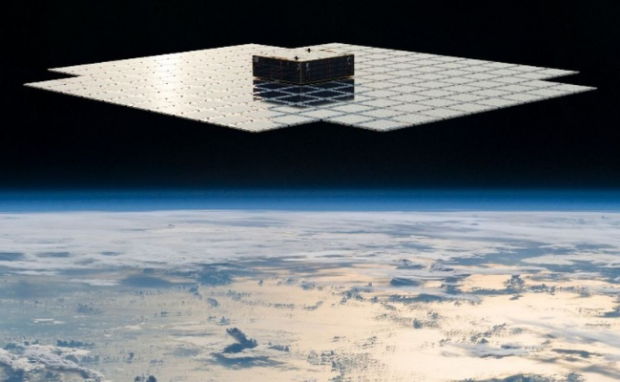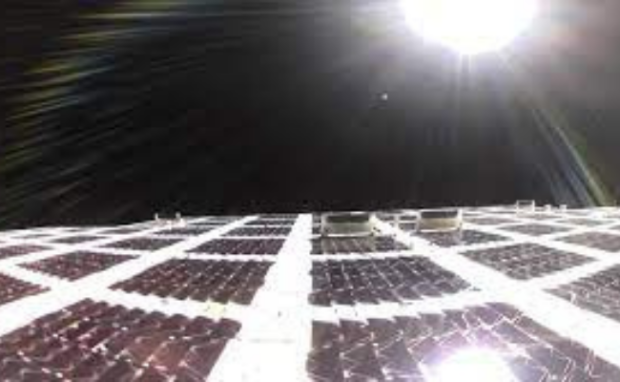BlueWalker 3 satellite outshines stars at night
AST & Science launched its BlueWalker 3 satellite last year, which grabbed attention due to its size and brightness. The Verge says it is the biggest commercial communications array in low Earth orbit, and it can turn any mobile phone into a satellite phone. However, some astronomers weren’t impressed because its light pollution obstructs their research.
Discussing pollution involves land, water, and air, but we rarely discuss excessive light. Believe it or not, excessive illumination is becoming such a serious problem that we call it light pollution. That may worsen as we launch more satellites and continue urban development. Hence, we must find ways to mitigate light pollution.
This article will discuss the purpose, characteristics, and impact of the BlueWalker 3. Then, I will share suggestions from experts on how to deal with satellites cluttering the night sky.
What is the problem with the BlueWalker 3?

Photo Credit: universetoday.com
The BlueWalker 3 seems great when you only discuss its purpose. It provides constant cell service to phones in any area on Earth. As a result, it turns any smartphone into a satellite phone.
The company said it delivers the “first-ever 5G cellular connectivity from space directly to everyday smartphones.” Astronomy.com says it is “essentially a cell tower in space.”
The BlueWalker’s enormous antenna array makes it possible. That array spans 64.3 square meters or 692 square feet, which is nearly the size of a badminton singles court.
That massive surface reflects copious amounts of sunlight 24/7. Its illumination peaked at magnitude 0.4, which puts it toe-to-toe with the top 10 brightest stars.
Space.com explains this illumination measurement assigns the brightest objects the smallest numbers. For example, a full moon has a magnitude of -12.6, and the sun is roughly -27.
In response, astronomers fear more companies will launch similarly bright satellites in the future. They warned the rapidly growing mega-constellations of Internet satellites are interrupting space observations.
Space.com says a Starlink satellite is only 0.7% as bright as BlueWalker 3. Yet, SpaceX allegedly plans to launch a network of 40,000. “The overall impact, particularly to the sky glow, is worrisome,” said Jeremy Tregloan-Reed, co-author of the BlueWalker 3 satellite study.
You may also like: Poor air quality is a growing city problem
The researcher told The Verge that satellite trails can obstruct telescopic observations. Also, bright orbital objects can make it harder to pinpoint constellations.
Tregloan-Reed warned satellite illumination could increase sky background glow, making it harder to see dust clouds, nebulas, and finer details in the night sky.
“Let’s nip it in the bud now before it does become an issue. If it does become an issue, then it’s going to completely change the night sky,” he added.
How do we mitigate satellite glow?

Photo Credit: spacenews.com
Astronomers have been coordinating with satellite firms to manage satellite glow. For example, SatHub is creating a database that tracks satellite movement.
That enables astronomers to plan observations around orbiting satellites. They could record and analyze data until a satellite moves through their field of view.
You may also like: How does satellite internet work?
Astronomy.com says researchers are working with SpaceX to discuss mitigating the worst effects. Also, the company behind BlueWalker 3 promised to work with space experts:
“At AST SpaceMobile, our mission is to democratize access to knowledge and information regardless of where people live and work. By connecting people, we aim to alleviate poverty, spur economic development, foster a diverse digital society, and save lives.”
“Solving significant problems for humanity often comes with challenges. In this case, we are working to address the concerns of astronomers.” That includes working with “NASA and certain astronomy working groups.”
Conclusion
The BlueWalker 3 satellite turns any smartphone into a satellite phone. Unfortunately, it reflects so much sunlight that it disrupts astronomy research worldwide.
That is why astronomers are working closely with satellite companies to mitigate satellite glow. However, light pollution is also a growing problem on Earth.
Click here to understand how light pollution could deprive future generations of a starry night. Also, head to Inquirer Tech for more digital tips and trends.